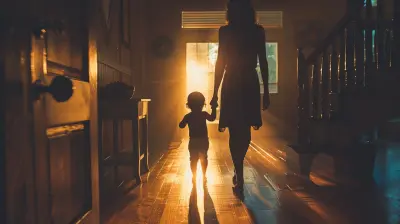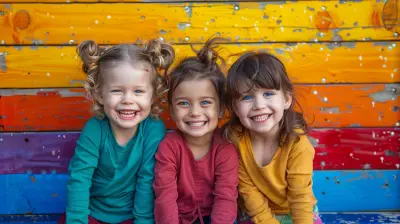Raising a Lifelong Learner: How to Encourage Curiosity in Children
19 August 2025
Let’s face it—kids ask a lot of questions. Like, a lot. If you’ve ever been interrogated by a toddler about why the sky is blue, why fish don’t blink, or whether unicorns eat spaghetti, you already know: curiosity in children isn't just a phase—it's a full-blown personality trait.
But here's the thing: curiosity is more than just a quirk. It's the secret sauce to lifelong learning, critical thinking, and, believe it or not, success later in life. When we nurture curiosity rather than shutting it down, we're not just raising kids who know stuff—we’re raising humans who want to know stuff.
So how do we do that without losing our sanity or, worse, falling into the trap of simply answering “Because I said so”? Buckle up, because we’re about to break it down in a fun, manageable, and totally doable way.
Why Curiosity Matters (And No, It Didn't Kill the Cat)
We’re all born curious. It's how we go from drooling babies to full-on question machines. But somewhere along the way—maybe around the time we start valuing neat answers over messy exploration—curiosity can start to slip away.That’s a problem, because curious kids:
- Are more motivated learners
- Adapt better to change
- Think more creatively
- Handle setbacks with more resilience
Basically, curiosity is like mental fuel. Without it, learning becomes a chore. With it? Learning becomes an adventure.
Step One: Embrace the “Annoying” Questions
Yes, we know. The 50th “Why?” of the day can feel like a tiny form of mental torture. But instead of giving the classic parental eye roll, try flipping the script.Ask yourself: what if their 500th question today is actually the spark of a future scientist, philosopher, or author?
Let them ask, and then go deeper. Turn the tables with something like, “Hmm, why do you think that happens?” Not only does this show your child that their questions matter, but it also helps them start thinking critically and forming their own ideas.
💡 Pro Tip: You don’t always have to know the right answer. Seriously. Google is your best friend, and “Let’s find out together” might just be the magic phrase every curious kid needs to hear.
Step Two: Create a Curiosity-Friendly Environment
You don’t need to turn your house into a science museum (although, props to you if you do). Supporting curiosity can be as simple as:- Keeping books within reach—all kinds, for all ages.
- Displaying interesting objects—rocks, shells, gadgets, old phones (they’ll think it’s ancient).
- Designing a “tinkering station”—stocked with craft supplies, recyclables, and random bits to build stuff.
When kids are surrounded by things that invite exploration, they’re way more likely to poke around, experiment, and ask questions—which is exactly what we want.
Step Three: Encourage the Art of Wonder
Remember when clouds used to look like dragons, and a cardboard box could be a spaceship? Kids live in a world of wonder. The trick is keeping that spark alive.Here’s how you can help:
- Slow down. Life’s busy, I get it. But taking a moment to pause and stare at the stars or feel the bark on a tree reminds kids (and us) that the world is full of magical things.
- Ask open-ended questions. Instead of saying, “Do you like this flower?” try, “What do you think this flower would say if it could talk?”
- Celebrate curiosity over correct answers. If your child guesses that birds fly because they’re powered by feather-fuel, don’t shut it down. Say, “That’s an interesting idea—what makes you think that?”
Wonder isn’t just for fairytales. It’s fuel for the imagination and the first step to deeper thinking.
Step Four: Make Mistakes Normal (Even Fun)
Let’s be honest: no one likes messing up. But curiosity and innovation thrive in environments where mistakes aren’t just tolerated—they’re celebrated.So when the baking soda volcano becomes a baking soda kitchen disaster, resist the urge to freak out. Instead, laugh it off and say, “Well, that didn’t go according to plan. What can we try differently next time?”
Teaching kids that it’s OK to be wrong helps them stay curious. Why? Because they’re not afraid to try, to test, to ask “What if?”
🎯 Bonus tip: Share your own “oops” moments. Kids love hearing that even adults mess up (especially when flour is involved).
Step Five: Follow Their Interests (Even the Weird Ones)
One week it’s dinosaurs. Next week it’s space. Then it’s ants. You’ll never know where a child’s curiosity will take them—and that’s a beautiful thing.Instead of steering them toward what we think they should be interested in, try going along for the ride. Read books, watch documentaries, hit up the local museum, or just ask tons of questions.
Yes, even if they want to tell you 27 facts about Minecraft mobs or how sloths go to the bathroom. (True story—they only do it once a week. See? Now you’re curious.)
Supporting their passions—no matter how niche—shows your child that their interests matter and that it's totally normal to geek out about stuff.
Step Six: Let Boredom Happen
Here’s something that might surprise you: boredom is actually good for curiosity.When kids have nothing to do, their brains start looking for something to dive into. That’s where the magic happens. Out of boredom springs creativity, problem-solving, and yes—curious exploration.
So, don’t feel bad if you’re not constantly entertaining your kid. Give them space. Let them wander. Let their minds wander. Some of the best learning happens while you’re staring at the ceiling, wondering what clouds taste like.
Spoiler: probably cotton candy.
Step Seven: Be Curious Yourself
You knew this one was coming, right?Our kids are always watching us. If we show excitement when we learn something new, if we try new hobbies, read books, or ask questions out loud—they'll notice. And guess what? They’ll start to copy us.
Get into the habit of saying “I don’t know, but let’s find out,” or even “That’s a great question—I never thought about that before.” It shows your child that curiosity doesn’t end when school does. It’s a lifetime thing.
Heck, take up something you’ve always wanted to try—knitting, gardening, building a robot, learning a language. It’s never too late to be a curious human.
Step Eight: Make Curiosity an Everyday Thing
You don’t need flashcards or fancy STEM kits to raise a curious kid.Here are a few everyday curiosity-boosting ideas:
- Let your child help cook dinner and talk about how heat changes food
- Go for a walk and see how many different plants or bugs you can notice
- Watch a documentary together and pause it every five minutes to talk
- Play “What if?” games in the car—“What if animals could talk?” “What if the moon was made of cheese?”
Curiosity doesn’t live only in classrooms or museums. It lives in everyday moments—if we’re paying attention.
Final Thoughts: Raising Question-Askers, Not Answer-Takers
At the heart of it, raising a lifelong learner means raising a kid who isn’t satisfied with just the facts. They want to know why, how, who, when, and what’s next.They don’t just memorize—they explore.
They don’t just consume—they question.
They don’t just follow the map—they’re drawing their own.
And the best part? You get to go on that adventure with them.
So the next time your child bombards you with yet another “Why,” take a deep breath… and smile. You’re not being grilled—you’re being invited into the wonderful, wild world of their growing mind.
Now that’s something to be curious about.
all images in this post were generated using AI tools
Category:
Child DevelopmentAuthor:

Austin Wilcox
Discussion
rate this article
1 comments
Oscar White
Curiosity is the seed of lifelong learning; nurture it by embracing questions, celebrating discoveries, and fostering an environment where exploration is valued over mere answers.
September 9, 2025 at 2:19 AM

Austin Wilcox
Absolutely! Encouraging curiosity fosters a growth mindset and instills a love for learning that lasts a lifetime. Embracing questions and celebrating discoveries are key to inspiring exploration in children.


